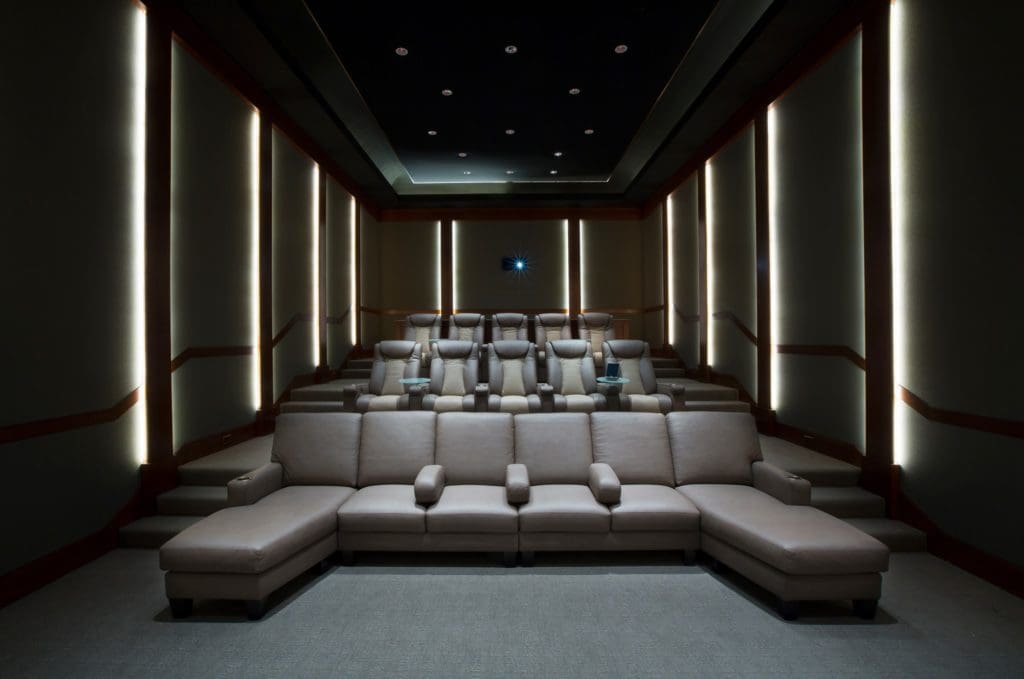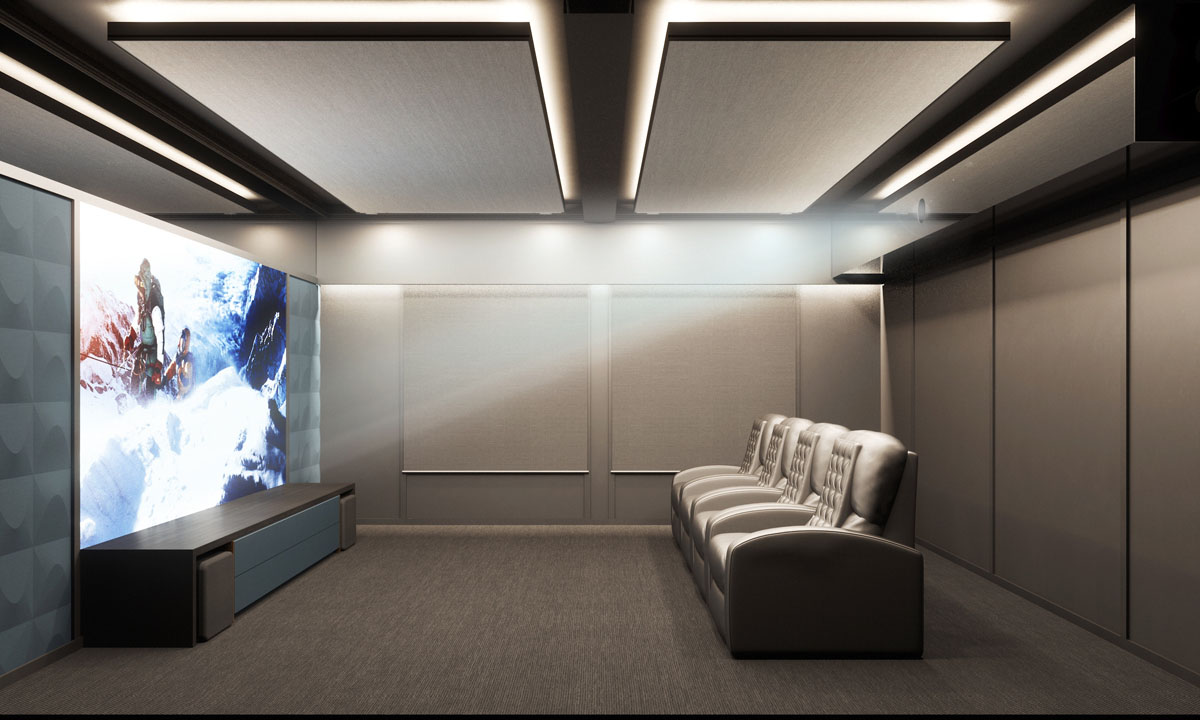Home Theater 101: Whatever You Required to Know for a Cinematic Experience at Home
Creating a home theater that rivals the cinematic experience of a commercial theatre entails careful consideration of multiple parts, consisting of display selection, audio systems, and area format. Whether you are considering the suitable display size or the intricacies of surround audio, recognizing these basics is vital.
Selecting the Right Screen
When establishing a home cinema, choosing the right display can make or break the checking out experience - tampa home theater installation. The screen acts as the focal point of your configuration, affecting picture top quality, viewing angles, and general visual. Key aspects to take into consideration consist of display type, size, and resolution
First, establish the appropriate screen dimension based on your room measurements and seating distance. A basic standard is to rest roughly 1.5 to 2.5 times the diagonal display size for ideal watching. Next off, pick between numerous screen types, such as fixed-frame, motorized, or retractable screens, each offering distinctive benefits. Fixed-frame displays usually supply the best picture quality, while motorized alternatives permit for adaptability precede use.
Resolution is an additional crucial aspect. For a really immersive experience, think about a display developed for 4K and even 8K material, guaranteeing sharpness and clarity. Additionally, think about the screen's gain, which influences illumination and comparison; a higher gain can improve illumination in well-lit spaces, while a reduced gain might be better for darker atmospheres.
Picking Audio Equipment
Audio devices is a crucial element of any type of home movie theater system, dramatically enhancing the overall viewing experience. The selection of audio gear can identify the depth, clarity, and immersion of sound, important for producing a cinematic environment.
When choosing audio equipment, consider a surround audio system, which typically includes a receiver, numerous audio speakers, and a speaker. A 5.1 or 7.1 channel system is suggested, where the first number represents the audio speakers and the 2nd the speaker, offering an immersive soundscape. The receiver is the heart of the system, managing sound and video clip signals, and must support modern formats like Dolby Atmos for a boosted spatial experience.
Quality audio speakers are necessary; appearance for models that offer a well balanced noise profile with good bass action. Floor-standing audio speakers can produce richer sound, while shelf choices save area. Furthermore, think about wireless alternatives for simplicity of installation, although wired systems usually provide exceptional efficiency.

Optimum Seating Arrangements
Producing an excellent home cinema experience pivots dramatically on optimum seating plans. The setup of seats plays a crucial role in both comfort and viewing quality, directly affecting the overall cinematic experience.
First, take into consideration the screen size and viewing range. An usual standard is to position seats at a distance approximately 1.5 to 2.5 times the angled size of the screen. This makes certain an immersive experience without stressing the eyes.
Next, altitude is vital. If your seats is in a tiered layout, the back rows must be more than the front to stay clear of obstructions. For level seats, ensure that the front row is not also near to the display, which everybody has a clear line of sight.
In addition, take into consideration the arrangement in regards to social dynamics. Team seating can boost the communal experience, look at more info while specific seats may be liked for personal watching.

Last but not least, prioritize convenience with ergonomic seating that supports extensive viewing durations. Including recliner chairs or supported seats can significantly improve the experience, making the home theater a favored location for both entertainment and relaxation.
Lighting and Setting
Effective illumination and setting are important parts of a properly designed home theater, as they substantially affect the viewing experience. The best illumination can boost the motion picture feeling, while poor options can diminish it. For optimal results, consider that site a layered illumination strategy that consists of ambient, task, and accent lighting.
Ambient lighting offers basic lighting, ensuring that the area is not totally dark, which can strain the eyes. Dimmer buttons are extremely suggested, enabling changes based upon the content being watched. Job lights, such as wall surface sconces or flooring lights, supplies useful illumination for activities like reading or navigating the space without interfering with the overall atmosphere.
Accent lighting can be utilized to highlight architectural features or develop focal factors, including deepness and rate of interest to the space. LED strip lights behind screens or along racks can supply a subtle radiance that improves the visual experience without frustrating the audience.
Wiring and Installation Tips
A tactical electrical wiring configuration is important for achieving optimal efficiency in your house theater system. Proper circuitry not just makes sure high-quality audio and video clip signals however likewise enhances the total aesthetic of your space. Begin by drawing up your design, identifying where each element will be positioned, including basics your screen, speakers, and receiver.
When picking cords, prioritize high-quality, suitably assessed wiring to lower signal loss. HDMI cable televisions should be made use of for video links, while speaker cord ought to match the specifications of your audio speakers and amplifier. Go with in-wall ranked cables to adhere to safety criteria and maintain a tidy look.

Conclusion
In recap, creating an outstanding home theater experience calls for careful factor to consider of various aspects, consisting of screen choice, audio tools, seating plans, lights, and wiring. Each element plays a crucial function in attaining optimal performance and atmosphere, inevitably enhancing the pleasure of home amusement. By prioritizing these elements, a motion picture atmosphere can be effectively reproduced, permitting immersive seeing experiences that equal typical theater settings. Interest to information in each location is essential for general fulfillment.
Developing a home cinema that measures up to the motion picture experience of a business theater includes cautious factor to consider of several parts, consisting of display choice, audio systems, and room format.When establishing up a home cinema, picking the ideal screen can make or break the viewing experience. Next, pick in between different screen kinds, such as fixed-frame, mechanized, or retractable screens, each offering distinct benefits. For a genuinely immersive experience, think about a screen made for 4K or also 8K material, ensuring intensity and clearness.In summary, developing a phenomenal home cinema experience needs careful factor to consider of different elements, consisting of screen option, audio devices, seating arrangements, lights, and electrical wiring.
Comments on “Expert Home Theater Tampa Solutions for Any Budget”